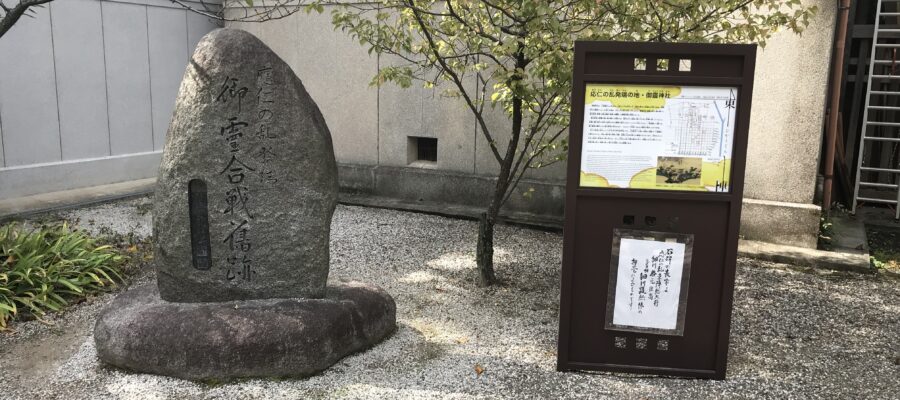御霊神社は、上御霊神社とも呼ばれ、上京の人々を中心に広く信仰を集めてきた由緒ある神社です。祭神として、非業の死を遂げた早良親王、そして吉備真備や橘逸勢をはじめ、13柱の神霊をお祀りしています。
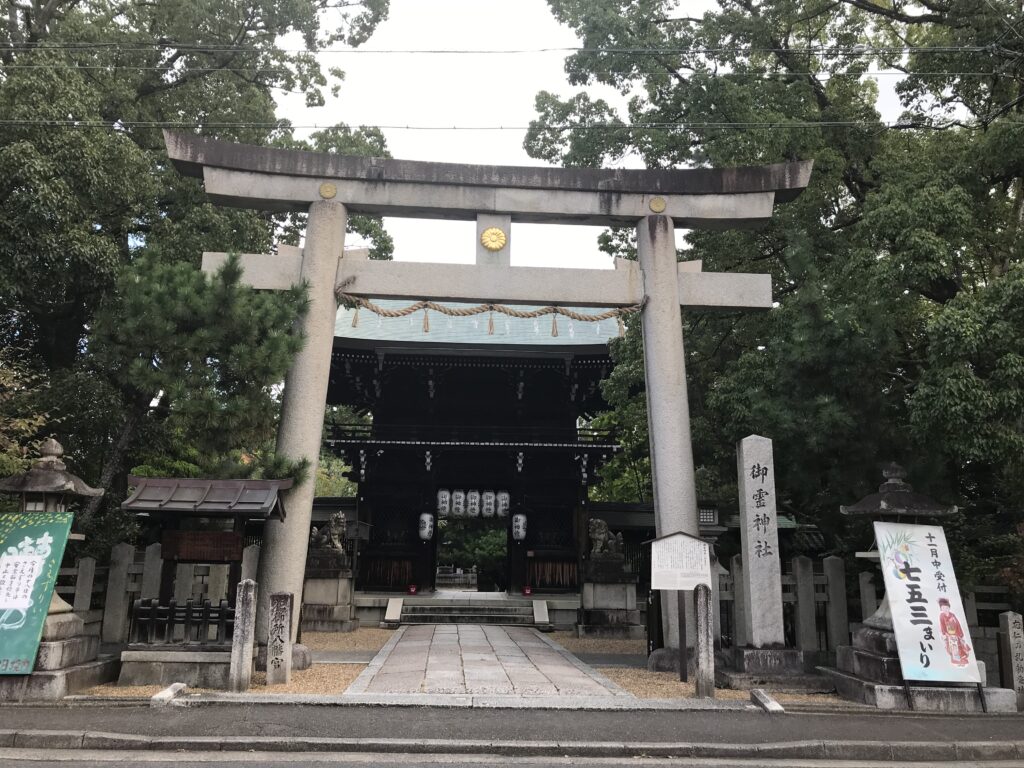
平安時代には、天変地異や疫病流行は怨霊の祟りが原因であると考えられていました。このような考え方をする御霊信仰が盛んな時代で、怨霊をなだめる目的で、御霊会と呼ばれるものが度々行われていました。
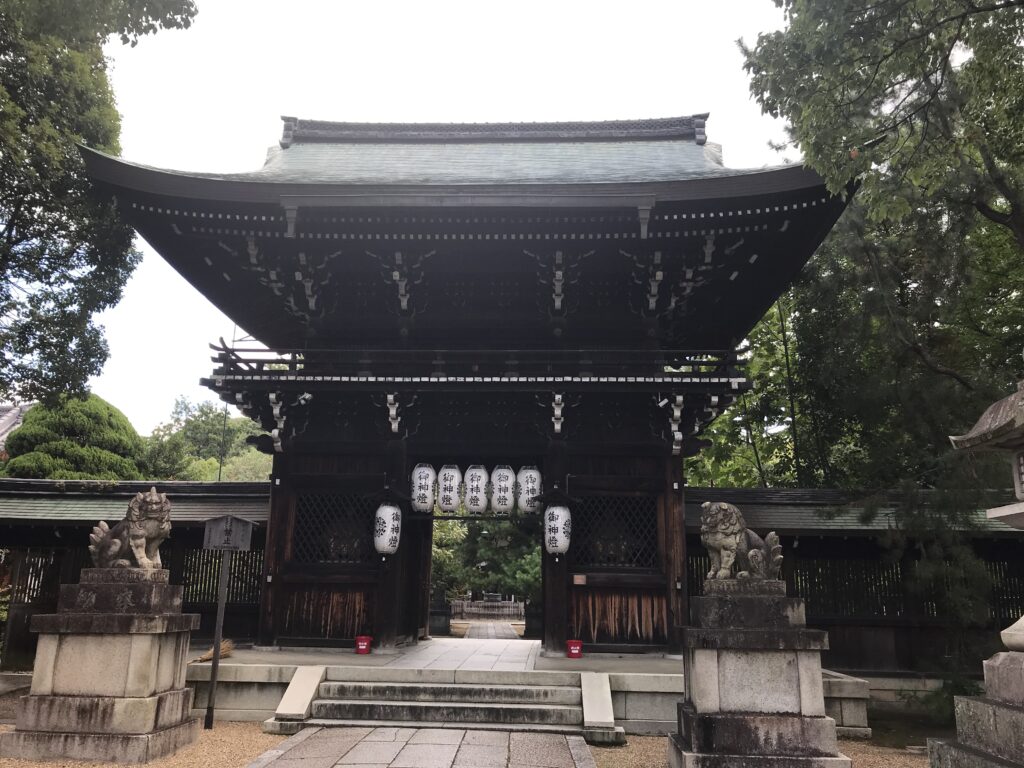
この御霊神社は、疫病除けの神社として名を広めたのでした。上は朝廷から、下は庶民に至るまで、広く信仰を集めた神社です。特に御所の守護神として皇室から厚く崇敬されていましたので、皇室からの寄付品(神輿や牛車等)を多数所蔵しているとのことです。
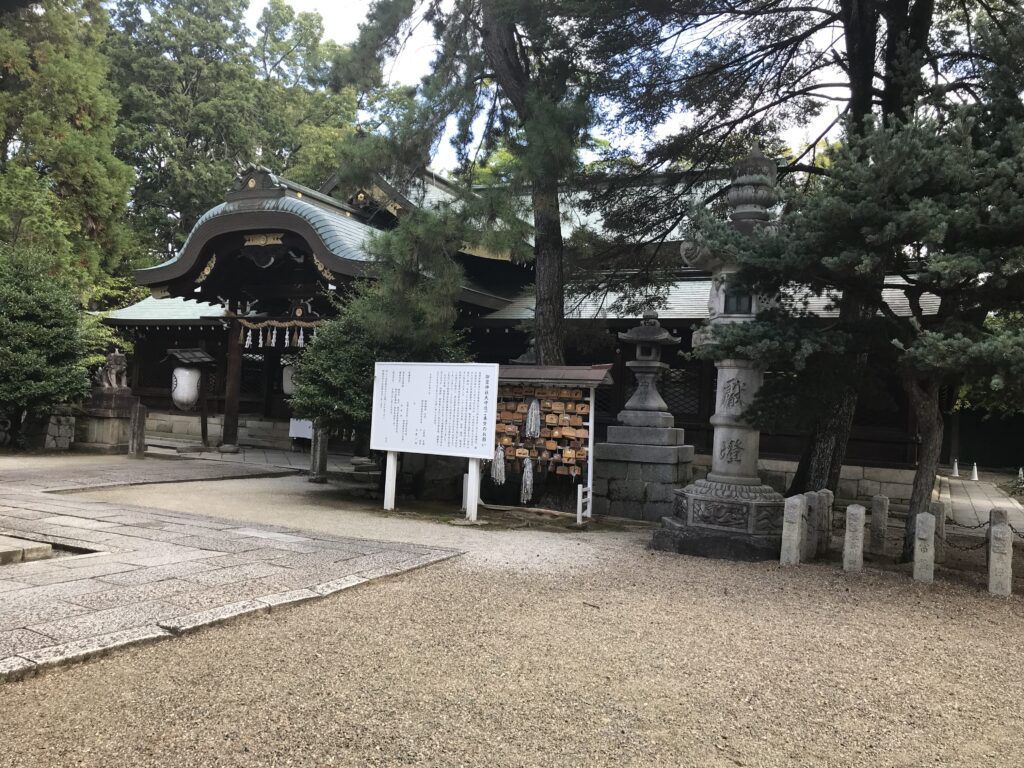
この地は、かの有名な応仁の乱が始まった地としても知られています。応仁元年(西暦1467年)、御霊の森に陣を構えた東軍の畠山政長を、西軍の畠山義就が襲撃した御霊合戦が発端となりました。境内が広く、周囲に堀や川があるため、戦の防御に適していたこと、また、近くに味方の邸宅があり援軍を期待できたことなどにより、畠山政長は、この地に陣を構えました。
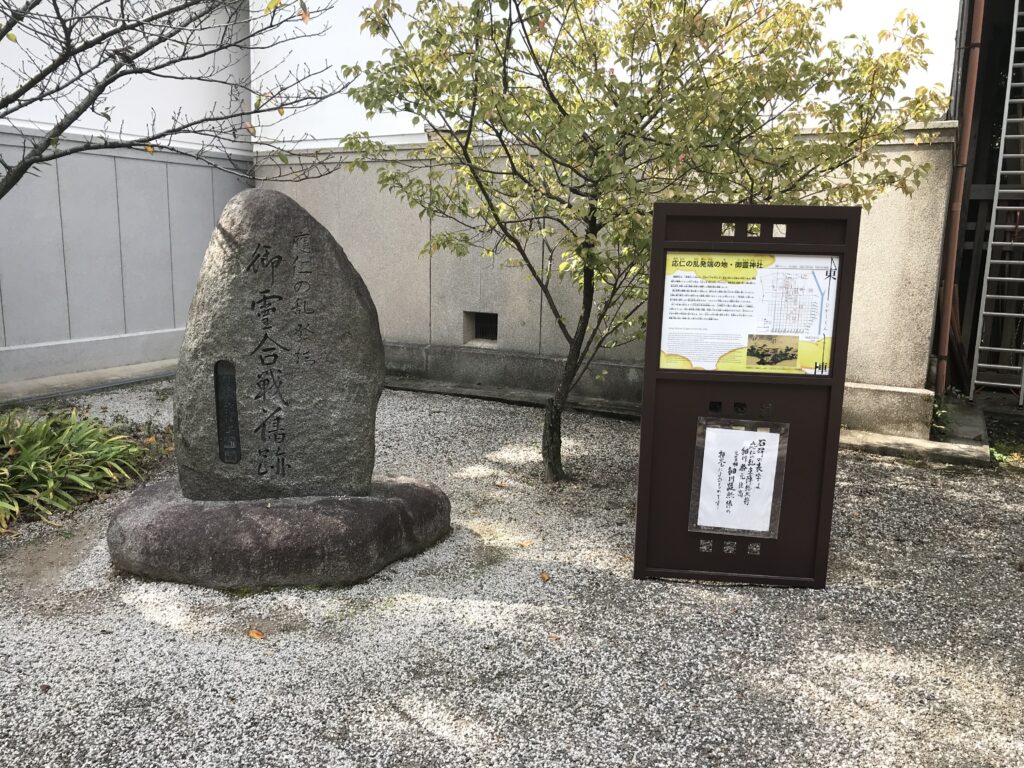
たった一昼夜の戦いの後、畠山政長は敗走するのですが、その後、この戦乱が11年も続くと予測した人はいなかったのではないでしょうか。応仁の乱は、期間が長いだけでなく、たくさんの人物が登場するため、私自身は何がどうなったのか整理できていませんが、戦の発端の地を訪問することができて、少し親しみを持てました。(完)
御霊神社の御朱印
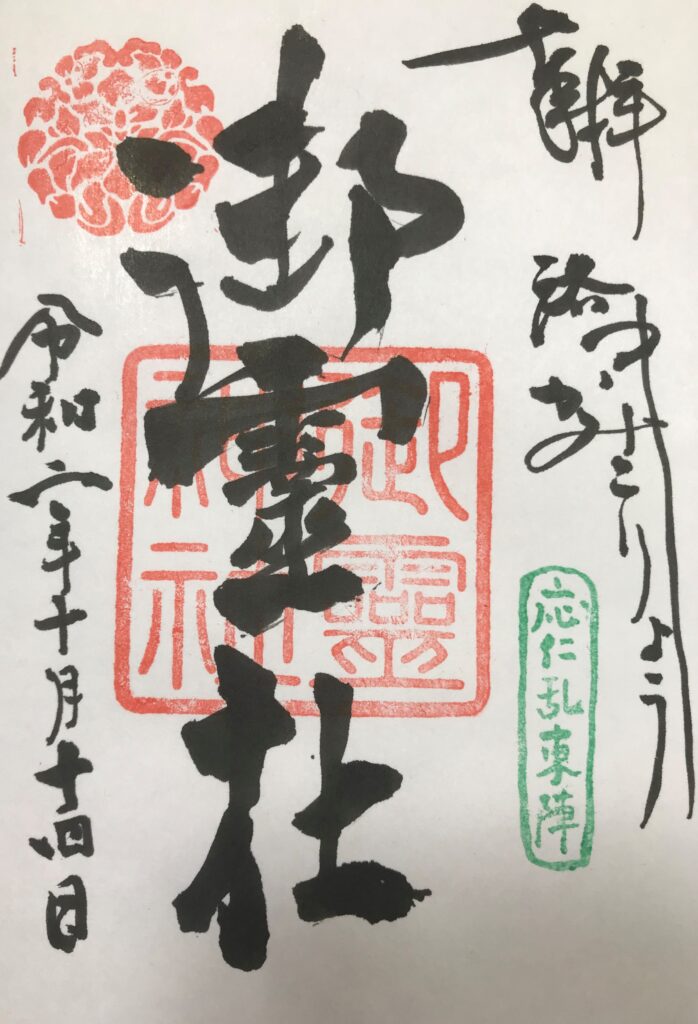
京都のおみやげ

価格:5,000円
(2021/11/27 17:37時点)
感想(34件)
Goryo Shrine (Kyoto City)
Goryo Shrine, also known as Kamigoryo Shrine, is a historic shrine that has been widely worshipped, especially by the people of Kamigyo (current northern part of Kyoto city). The shrine enshrines thirteen deities, including Prince Sawara, who died an untimely death, as well as Kibi-no-Makibi and Tachibana-no-Hayanari.
In the Heian period (794-1185), it was believed that natural disasters and epidemics were caused by the hauntings of grudge-bearing spirits. This was a time when the belief in the spirits of the dead was very popular, and the so-called Goryo-e was often held to appease the spirits of the dead.
This Goryo Shrine spread its name as a shrine to ward off plagues. The shrine was widely worshipped, from the Imperial Court on up to the common people on down. It was especially revered by the imperial family as the guardian deity of the Imperial Palace, and therefore has many items donated by the imperial family (portable shrines, ox carts, etc.).
This place is also known as the place where the famous Onin War started. In the first year of the Onin period (1467 A.D.), Mananaga Hatakeyama of the Eastern Army, who had set up camp in the Goryo Forest was attacked by Yoshihiro Hatakeyama of the Western Army. This incident triggered the Goryo Battle. Masanaga Hatakeyama set up his camp here because the precincts of the shrine were wide and surrounded by moats and rivers, making it suitable for defending against the battle, and because there were allied residences nearby where he could expect reinforcements.
After only one day and night of fighting, Masanaga Hatakeyama
was defeated, but no one could have predicted that this war would last for 11 years. The Onin War was not only long in duration, but also featured so many people that I myself have not been able to sort out what went on, but being able to visit the place where the war started gave me some familiarity. (End)
Sanctuaire de Goryo (ville de Kyoto, préfecture de Kyoto)
Le sanctuaire de Goryo, également connu sous le nom de sanctuaire de Kamigoryo, est un sanctuaire historique qui a été largement vénéré, notamment par les habitants de Kamigyo (actuelle partie nord de la ville de Kyoto). Le sanctuaire consacre treize divinités, dont le prince Sawara, mort prématurément, ainsi que Kibi-no-Makibi et Tachibana-no-Hayanari.
Au cours de la période Heian (794-1185), on croyait que les catastrophes naturelles et les épidémies étaient causées par la hantise d’esprits rancuniers. À cette époque, la croyance dans les esprits des morts était très populaire, et ce qu’on appelle le Goryo-e était souvent organisé pour apaiser les esprits des morts.
Ce sanctuaire Goryo a répandu son nom en tant que sanctuaire destiné à éloigner les fléaux. Le sanctuaire était largement vénéré, depuis la cour impériale jusqu’aux gens du peuple. Il était particulièrement vénéré par la famille impériale en tant que divinité tutélaire du palais impérial, et possède donc de nombreux objets offerts par la famille impériale (sanctuaires portables, chars à bœufs, etc.).
Ce lieu est également connu comme l’endroit où la célèbre guerre d’Onin a commencé. La première année de la période Onin (1467 après J.-C.), Mananaga Hatakeyama, de l’armée de l’Est, qui avait établi son camp dans la forêt de Goryo, a été attaqué par Yoshihiro Hatakeyama, de l’armée de l’Ouest. Cet incident a déclenché la bataille de Goryo. Masanaga Hatakeyama a établi son camp ici parce que l’enceinte du sanctuaire était large et entourée de douves et de rivières, ce qui la rendait propice à la défense contre la bataille, et parce qu’il y avait des résidences alliées à proximité où il pouvait attendre des renforts.
Après seulement un jour et une nuit de combat, Masanaga Hatakeyama
a été vaincu, mais personne n’aurait pu prédire que cette guerre durerait 11 ans. La guerre d’Onin n’a pas seulement duré longtemps, elle a aussi impliqué tant de personnes que je n’ai pas été capable de comprendre ce qui s’est passé, mais le fait d’avoir pu visiter l’endroit où la guerre a commencé m’a donné une certaine familiarité. (Fin)
